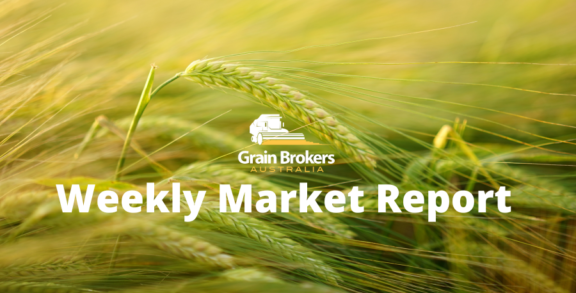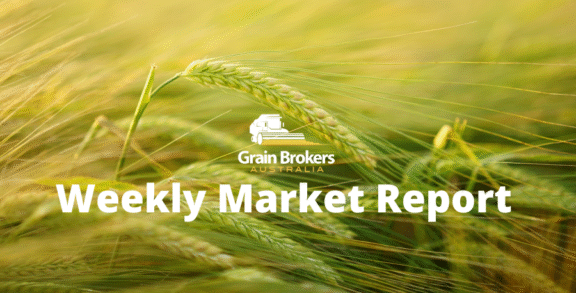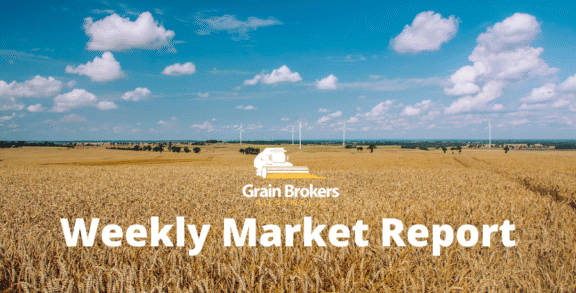
Hot on the heels of Wednesday’s global supply and demand update from the USDA, Thursday saw Brazil’s National Supply Company (CONAB) release its June crop update. With an improved outlook for the safrinha corn harvest and a rise in the planted soybean area, CONAB increased projected 2023/24 production for both row crops compared to its May report.
Total 2023/24 corn output is now pegged at 114.14 million tons, up from 111.64mmt in May but significantly lower than the 2023 harvest of 131.87mmt. The total planted area of 20.84 million hectares is 6.4 per cent lower than the final 2022/23 area of 22.27 million hectares, accounting for a significant proportion of the lost output. The average yield in 2022/23 was 5.92 metric tonne per hectare, and based on CONAB’s current production and seeded area numbers, the average 2024 harvest yield is expected to drop to 5.48mt/ha.
CONAB is now calling the safrinha corn crop 88.116 million metric tonne, a 2.3 per cent increase compared to the May production estimate but 13.9 per cent lower than last season’s harvest of 102.164mmt. With around 12 per cent of the crop harvested at the start of last week, early yield numbers have reportedly surprised to the upside, particularly in regions that experienced more favourable weather conditions post-planting. The area planted to safrinha corn is down significantly from 17.18 million hectares to 16.15 million hectares. That puts the projected yield for the 2024 harvest at 5.46mt/ha compared to 5.95mt/ha in 2023.
CONAB has this season’s first corn crop output at 23.62mmt off a planted area of 4.03 million hectares and an average yield of 5.86mt/ha. This compares to 27.37mmt, 4.44 million hectares and 6.16mt/ha, respectively, last year. The third crop production is estimated at a tad over 2.4mmt, up from 2.33mmt the previous season. This is off a seeded area of 0.66 million hectares for an average yield of 3.67mt/ha.
Respected row crop analyst Michael Cordonnier agrees with CONAB, increasing his corn output estimate by 2mmt to 114mmt, with a slightly higher forward bias, in his weekly update, which was released ahead of the USDA’s June report.
While the spread decreased, the massive discrepancy between the CONAB and USDA numbers remain unresolved. In last week’s edition of the World Agricultural Supply and Demand Estimates, the USDA left Brazilian corn production unchanged at 122mmt. The main point of difference is in the respective planted area numbers, with the USDA down only 4 per cent year-on-year compared to CONAB’s 6.4 per cent decline. There is also a 3.5 per cent difference in the harvested yield, with the USDA at 5.67mt/ha and CONAB at 5.48mt/ha.
While Brazil is expected to remain competitive on the world stage, CONAB’s lower output estimate effectively caps Brazilian corn exports in 2023/24 at around 42mmt. This compares to the latest USDA estimate of 50mmt, leaving an 8mmt hole in global trade. The divergence will be resolved at some point, but that is unlikely to happen for at least a couple of months when the second crop yield trends are more apparent and final harvest figures are available. If it ends up at the low end, then the lost corn export demand will most likely be funnelled into the US balance sheet over the next twelve months, with lower seeded areas being reported in both Ukraine and Russia.
On the soybean front, CONAB pencilled final production in at 147.35mmt, 1.2mmt higher than its May forecast but 4.7 per cent lower than last season’s record output of 154.62mmt. Unlike corn, the area planted to soybeans increased season-on-season, up almost 2 million hectares to a record 45.98 million hectares. This means that the crop yield suffered considerably at the expense of the country’s extremely variable, and in some cases extreme, growing season weather conditions. The average soybean yield for the 2023 harvest was 3.51mt/ha, but this has fallen 8.6 per cent this year to 3.21mt/ha.
In last week’s update, the USDA reduced its Brazilian soybean production estimate by 1mmt but remains stubbornly higher than CONAB at 153mmt. With the harvest now completed, it is difficult to understand why the USDA insists on taking such small steps to reduce the spread. To provide another perspective, Cordonnier left his soybean production estimate unchanged at 147mmt in his latest Brazilian crop update.
Despite the smaller harvest, exports continue at near record pace, with shipments in the first 12 days of June reported at more than 6mmt and on track to exceed 15mmt for the month. That would be 1.7mmt ahead of last year’s pace and, if realised, would put February to June soybean exports at record levels, almost 0.85mmt ahead of the same time in 2023.
Meanwhile, an executive order delivered by Brazilian President Luiz Inacio Lula da Silva on June 4 will limit the ability of the country’s commodity exporters to take advantage of tax credits, thereby hurting their bottom lines. It takes effect immediately but needs congressional approval within four months to remain valid. In the short term, domestic merchants are pushing soybean and corn prices higher to compensate.
The surprising tax change can potentially reduce the global competitiveness of Brazilian corn and soybeans, conceivably pushing demand to the US. However, there is an extremely powerful agriculture focussed lobby network within Brazil, and the backlash may have enough national influence to halt progress through Congress.
The reaction in China, the world’s biggest importer of soybeans and Brazil’s biggest soybean customer, was swift. In the heart of Brazil’s peak soybean export window Chinese importers have booked at least 208,000 metric tonne of US soybeans, with the flash sales the first such transactions since January.
While Brazil’s summer crop output appears to have stabilised, the deficits relative to the USDA’s global numbers mean some holes must be filled. This will push attention to row crop progress and production projections in the US, with any hiccups having a bullish impact on international oilseed and feed grain prices.
Call your local Grain Brokers Australia representative on 1300 946 544 to discuss your grain marketing needs.
Written by Peter McMeekin.





